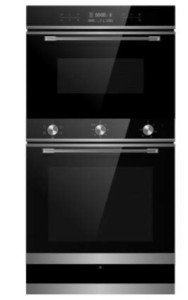The Modern Kitchen: A Guide to Built-In Ovens and Hobs
In today's fast-paced world, where cooking has actually ended up being an imaginative outlet and an essential part of every day life, having the ideal kitchen appliances is essential. Among these, built-in ovens and hobs stand out as favorites in contemporary cooking areas. This short article aims to check out these appliances in depth, discussing their advantages, types, installation options, and essential ideas for choosing the best designs for your kitchen.
Understanding Built-In Ovens and Hobs
What are Built-In Ovens?
A built-in oven is a device that is designed to fit flawlessly into cabinetry, providing a clean aesthetic in the kitchen. They vary from freestanding ovens and are understood for their adaptability, offered in various sizes and functionalities. Built-in ovens can be electric, gas, and even steam ovens, making them appropriate for various cooking styles.
What are Hobs?
Hobs, also referred to as cooktops, are the flat cooking surface areas normally found on the counter top. Like ovens, hobs can be found in many types, consisting of gas, electric, induction, and even integrated designs. Their compact nature enables versatility in kitchen layouts and styles.
Table 1: Comparison of Built-In Ovens and Hobs
| Feature | Built-In Oven | Hob |
|---|---|---|
| Setup Type | Integrated into kitchen cabinets | Installed on countertop |
| Cooking Methods | Baking, roasting, steaming | Boiling, frying, sautéing |
| Types | Single, double, combination | Gas, electric, induction |
| Visual appeals | Modern, smooth designs | Different surfaces available |
| Control | Digital programming, manual | Knob or touch control |
| Cost Range | Mid to high-range | Wide, depending upon type |
Advantages of Built-In Ovens and Hobs
Visual Appeal
Built-in ovens and hobs contribute considerably to a streamlined look in modern-day cooking areas. russell hobbs built in double oven into cabinets enables a tidy and expert finish that matches any kitchen design.
Space-Saving Design
Among the pivotal advantages of built-in ovens and hobs is their space-saving design. As they are fitted directly into kitchen cabinetry, they maximize important counter area, making the kitchen feel larger and more organized.
Adaptability in Cooking Methods
Built-in ovens included various cooking functions, such as convection, barbecuing, and self-cleaning options. Similarly, hobs provide varied cooking approaches, consisting of rapid boiling with induction innovation or the traditional flame of gas hobs. This versatility enables home cooks to try out a broad range of cooking strategies.
Boosted Safety Features
Many modern-day built-in hobs and ovens included advanced safety features, such as automatic shut-off, cool-touch doors, and child locks. These functions enhance safety, especially in households with children.
Choosing the Right Built-In Oven and Hob
Selecting the best built-in oven and hob for your kitchen involves a number of factors to consider:
Factors to Consider
- Kitchen Layout: Understand the circulation and style of your area to pick appliances that fit your style.
- Cooking Habits: Are you a casual cook, or do you prepare intricate meals? Comprehending your cooking needs will guide your selection.
- Spending plan: Building a budget will assist narrow down your options without overspending.
- Utilities Available: Check if you have access to gas lines for a gas hob or if you prefer electric options.
- Energy Efficiency: Look for energy-efficient models that can conserve on electrical power or gas costs gradually.
Types of Built-In Ovens and Hobs
Built-In Ovens
- Single Ovens: Ideal for smaller kitchens or casual cooks.
- Double Ovens: Great for those who often amuse or prepare multiple dishes concurrently.
- Mix Ovens: Feature both conventional and microwave performances.
Hobs
- Gas Hobs: Perfect for those who prefer the control of open flames.
- Electric Hobs: Common and easy to utilize, however may take longer to warm up.
- Induction Hobs: Quick heating and energy-efficient, but need compatible pots and pans.
Frequently asked question Section
Q1: Are built-in ovens more expensive than freestanding ovens?A1: Generally, built-in ovens are more costly due to their style and setup requirements. However, the price can differ based upon features and brand names. Q2: Can I set up a built-in oven myself?A2: While DIY
setup is possible, it is recommended to work with a professional for gas and electrical connections to guarantee security and compliance with local codes. Q3: What maintenance do built-in ovens and hobs require?A3: Regular cleansing is vital. Hobs might need occasionaldescaling, and ovens can take advantage of self-cleaning functions if
available. Q4: How do I pick between gas and electric hobs?A4: Consider your cooking preferences, readily available utility connections, and safety functions.
If you value exact temperature control, gas might be the
best choice. For quick heating, electric or induction might be better. Q5: What are the energy efficiency scores of built-in ovens and hobs?A5: Most contemporary built-in ovens and hobs included energy scores, similar to other appliances.
Try to find those with high rankings to minimize energy expenses. In summary, built-in ovens and hobs are essential parts of an elegant and functional modern kitchen. Their range, security functions, and aesthetic appeal make them an appealing choice for property owners and striving chefs alike. By carefully considering your cooking practices, kitchen layout, and style choices, you can choose the right built-in appliances that enhance your cooking experience and transform your kitchen into a cooking haven. The investment in these appliances not just includes worth to your home however likewise elevates your cooking to brand-new heights.

